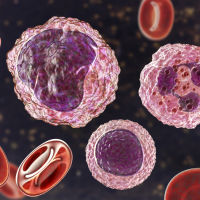The path to innovation is often based on intuition or insight. But the implementation of new ideas in healthcare requires rigorous testing and confirmation.
However, one can argue that in the field of critical care, this cautious approach has let clinicians down. There is no doubt that clinical trials are important, but at the same time, they can be imperfect, inefficient, and often applicable only to set hypothesis. This overemphasis on proving things before applying them has resulted in slow progress in critical care.
While nothing in healthcare is implemented until its benefits are proven, there are some clinicians, educators, and scientists who have untested ideas as to how care could be further improved. Here is an overview of some of those unproven, yet promising ideas, for critical care:
Using Vitamin C as a Therapeutic Adjunct in Sepsis
A recent publication by Marik et al. suggested that vitamin C, in addition to hydrocortisone and thiamine, may improve organ function and survival. Currently, there are several trials in place to confirm these findings. But there is no doubt that vitamin C may have some interesting effects in sepsis, maybe through improvement of endothelial reactivity and in microvascular perfusion. While there are many unsolved questions related to this, the idea of appropriately dosed vitamin C could be a low-risk, low-cost, helpful addition to the current armamentarium used against sepsis.
Impaired Cellular O2 Utilisation is the Underlying Defect Causing Lactic Acidosis in Septic Shock
Fluid resuscitation plays an important role in sepsis management. But its use is primarily driven by the belief that hypotension and hyperlactataemia arise from inadequate oxygen availability. But what if that was not the case? Central venous oxygen saturation (ScvO2) indicates greater than normal O2 extraction, and in sepsis patients, ScvO2 often remains normal. If ScvO2 is normal, targeting a further boost in oxygen delivery through fluid administration may not be the right step. Therefore, the idea of modulating the aggressiveness of fluid resuscitation in accordance with measurements of ScvO2 and determining the base excess component not attributable to lactate could help assess the renal compensating ability for the stress of metabolic acidosis.
Functional Imaging of Living Cells In Vivo
In the future, we may see imaging modalities that help us focus on interventions such as drug delivery and the ability to assess their effects. There are already some techniques in use that demonstrate the ability of synthetic biological devices to locate and tag tissues of interest. These include Caspase tracking, specially engineered bacteria that home to tumour cells, and cell-type classifiers. There are other imaging methodologies that show promise, including hand-held vital microscopes that have been shown capable of imaging microvessels and identifying and quantifying leukocytes in the microcirculation of accessible tissues.
`
Averting Cognitive Decline by Encouraging Cues to Maintain Normal Variations of Physiology and Behaviour
Cognitive ability and alertness are important components and markers of health. Post-Intensive Care Syndrome (PICS) is a challenging consequence of critical illness. It can be prevented through early mobilisation, minimum sedation, and prevention of delirium. But the idea of prioritising maintenance of normal daily psychosocial interactions and variations of activity during the post-resuscitation and recovery phases of ICU are could further help prevent cognitive decline in patients.
Using Personalised Medicine to Optimise Sepsis Management and Outcomes
Sepsis is a lethal condition that continues to plague patients in the ICU. Sepsis management is a challenge for clinicians, but utilising newer precision tools may be the key to identifying the underlying causes of sepsis as well as help select well-targeted treatments that could help improve outcomes in patients with sepsis.
These and other promising ideas could change the face of intensive care in the future and are worth looking into and further investigating and testing so that they could be implemented in the clinical setting.
Source: Critical Care
Image Credit: iStock
References:
Marini JJ et al. (2019) Thinking forward: promising but unproven ideas for future intensive care. Critical Care, 23(Suppl 1):197.
Latest Articles
Sepsis, intensive care, ICU care
an overview of some of those unproven, yet promising ideas for critical care:



























